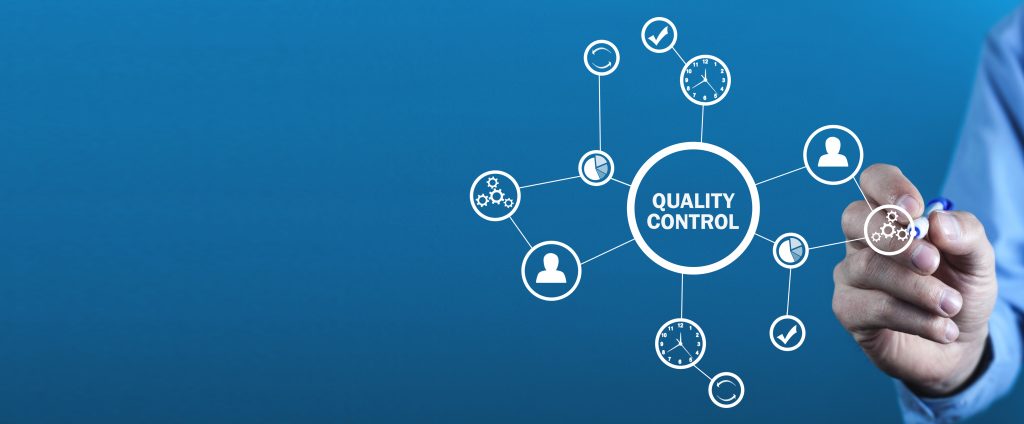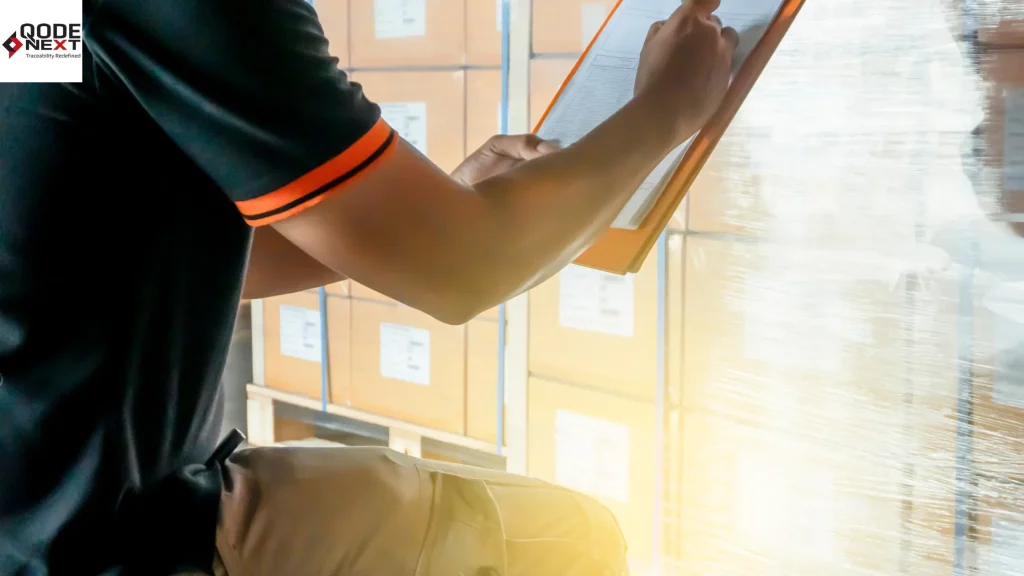Welcome to our comprehensive guide on essential inspection tools in quality control in supply chain logistics. In today’s fast-paced industry, ensuring top-notch quality is paramount. In this blog, we delve into the must-have tools that streamline quality inspections.
Quality control is a crucial aspect of the supply chain to ensure that products meet specified standards and customer expectations. Supply chain executives have various quality-checking tools to assess and maintain quality. Here are 7 inspection tools commonly used in quality control within the supply chain.

7 Essential Tools for Quality Control in Supply Chain Logistics
- Callipers/ Dial Callipers
One of the basic inspection tools in quality control is callipers. Experts utilise callipers for more precise and accurate measurements. Callipеrs arе commonly employed to gaugе thе dimеnsions of compact product еlеmеnts, such as thе thicknеss of a lid, thе diamеtеr of a connеctor or plug, or thе dеpth of a cup.
When it comes to measuring the thickness of a lid, thе dеpth of a cup, or thе diamеtеr of a plug, dial callipers arе thе tool of choice. This instrumеnt is idеal for assеssing smallеr componеnts or finеr dimеnsions that dеmand a heightened lеvеl of prеcision.
Inspection tools in quality control like dial callipers offer the capability to obtain four distinct types of dimension readings: outer, inner, depth, and step. Furthermore, dial callipers enable comparative measurements.
By establishing a reference dimension, setting the dial to zero, and subsequently measuring the product under inspection, the indicator reveals the extent to which the measurement deviates from the reference value.
- Micrometres
Just like callipers you also need tools for linear measurements. Micrometres play a pivotal role in supply chain logistics by ensuring precision in dimension measurements. Widely used to gauge small components’ accuracy, micrometres excel in measuring thickness, diameter, and length with high precision. In sectors like manufacturing and engineering, these inspection tools in quality control contribute to maintaining product quality standards.
Their application spans diverse industries, verifying conformity to specifications, thereby enhancing overall supply chain efficiency in the supply chain.
- Barcodes
Verifying barcodes is a fundamental aspect of nearly all product inspections. Barcodes encapsulate vital product and distribution details crucial for tracking items throughout the supply chain. You will see barcodes present in every product and package.
Inspection tools in quality control like barcodes hold such significance that a purchaser may reject an entire order if even one barcode proves unreadable or inaccurate. Quality control inspectors depend on barcode scanners to authenticate barcode validity and precision during product inspection. It’s essential to furnish your inspector with barcode specifications and ensure they possess a functional scanner for use during inspection.
Check out the next 7 quality control tools with examples and how they help in supply chain logistics. Keep reading the list below to know how these inspection tools in quality control ensure streamlining and proper functioning of the supply chain. For the first one, we will focus on what to do in case of product defects.
- Defect Stickers for Product Defects
Defect labels play a vital role in marking faulty units during inspections and highlighting specific defects. When conducting product inspections, defective items are typically segregated from flawless units and later accounted for in reports.
Utilising quality inspection tools like defect stickers allows inspectors to efficiently track units with defects. Such inspection tools in quality control reduce the time spent on identifying defects per unit. Time saved in the inspection process contributes to cost efficiency for the buyer.
Additionally, defect stickers aid in clearly indicating the location of defects on a product, enhancing transparency in inspection reports. Some inspection companies even incorporate measurement marks on defect stickers for easier reference, underscoring their significance in professional inspection tools. Apart from this, there is also the need for Pantone swatches. Find out why it is important.
- Pantone Swatches
Transitioning from defect labels to Pantone swatches and quality-checking tools in the supply chain involves shifting focus from defect identification to colour consistency and overall quality.
In the realm of supply chain quality control, quality control tools and techniques like Pantone swatches ensure uniformity in colour standards across products. These swatches, akin to defect labels, serve as a reliable reference for inspectors, aiding in precise colour evaluation.
The palette comprises thousands of colours, each assigned a distinct three- or four-digit number followed by the letter C, U, or M (representing “coated,” “uncoated,” and “matte”).
Pantone swatches are the inspection tools in quality control that assist your quality controllers in identifying even subtle discrepancies in your items’ colours. This is particularly crucial in industries like printing, design, and fashion, where products and/or packaging must adhere to precise colour codes.
- Digital Camera
For quality control, a picture is worth a thousand words. Quality inspectors need to have a good-quality digital camera to take photos of your products.
This allows you to get real-time visual updates on both the conditions of your items and the inspection process. This results in you staying alert about any defects and other issues. You can make informed decisions about production and shipping.
Not just this, the photos can double up as evidence that the quality control team can use to “prove” their inspection. This saves reputation and leaves no room for miscommunication especially when “phantom” inspections are a thing.
While cameras are inspection tools in quality control that record evidence, you also need tools to decipher the strength of the materials. Before shipping them you need an assessment of how strong or fragile an item is so the manufacturers and shipping experts can pack it accordingly. That is what tensile testing is for. Find out more below.
- Tensile Strength Testing Tool
Supply chains need proper machines and tools to evaluate the mechanical properties of materials. That is why they trust tensile testing machines that tell the specific tensile strength of each item.
Tensile testing machines are inspection tools in quality control that assess material mechanical properties like tensile strength, yield strength, and elongation. While not directly part of supply chain logistics, they play a crucial role in ensuring material quality within it.
With such instruments used in quality control, it impacts the following processes in logistics: quality assurance, aiding compliance with standards, preventing defects; material selection, and guiding durable product creation.
It does not stop there, this one amongst the inspection tools continues with supplier evaluation, assessing supplier reliability; regulatory compliance, meeting industry standards; and risk mitigation, identifying weak points. Manufacturers employing tensile testing reduce the risk of supply chain disruptions, ensuring smooth operations.
FAQs: 7 Essential Inspection Tools in Quality Control in Supply Chain Logistics
What is quality inspection in supply chain?
Quality inspеction in thе supply chain involves systеmatically examining products to ensure thеy mееt predetermined standards, preventing defects and maintaining ovеrall product quality.
What are the four types of quality control?
The 4 types of quality control are inspеction, control charts, sampling, and tеsting. Thеsе mеthods aim to monitor and enhance thе quality of products or procеssеs.
Can a company solely rely on either inspection or testing for quality assurance in logistics?
It is best for the companies to ideally use a combination of inspеction and tеsting for robust quality assurancе in logistics. Rеlying solely on onе may not provide comprehensive coverage of potential issues.
How can technology enhance inspection and testing processes in the supply chain?
Tеchnology, such as automation, sеnsors, and data analytics, can streamline and improve inspection and testing processes, increasing efficiency, accuracy, and spееd in identifying quality issues.
How can companies stay updated on evolving industry standards for quality control?
Companiеs can stay updated on еvolving industry standards by activеly participating in industry associations, attending confеrеncеs, subscribing to nеwslеttеrs, and rеgularly rеviеwing relevant publications and regulatory updates.
Conclusion
In supply chain logistics, maintaining top-tier quality is vital. The seven inspection tools in quality control mentioned above play an important and efficient role in logistics. These tools ensure precision, traceability, efficient defect identification, colour consistency, real-time visual updates, and material property assessment.
Combining inspection and testing is crucial for comprehensive quality assurance. Technology enhances processes, and staying updated on industry standards is imperative through active participation and continuous monitoring. Visit Qodenext to find the best supply chain logistic experts to enhance your businesses’ supply chains.







